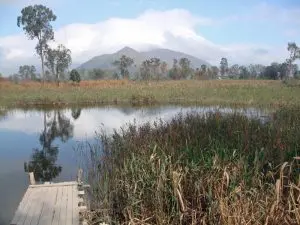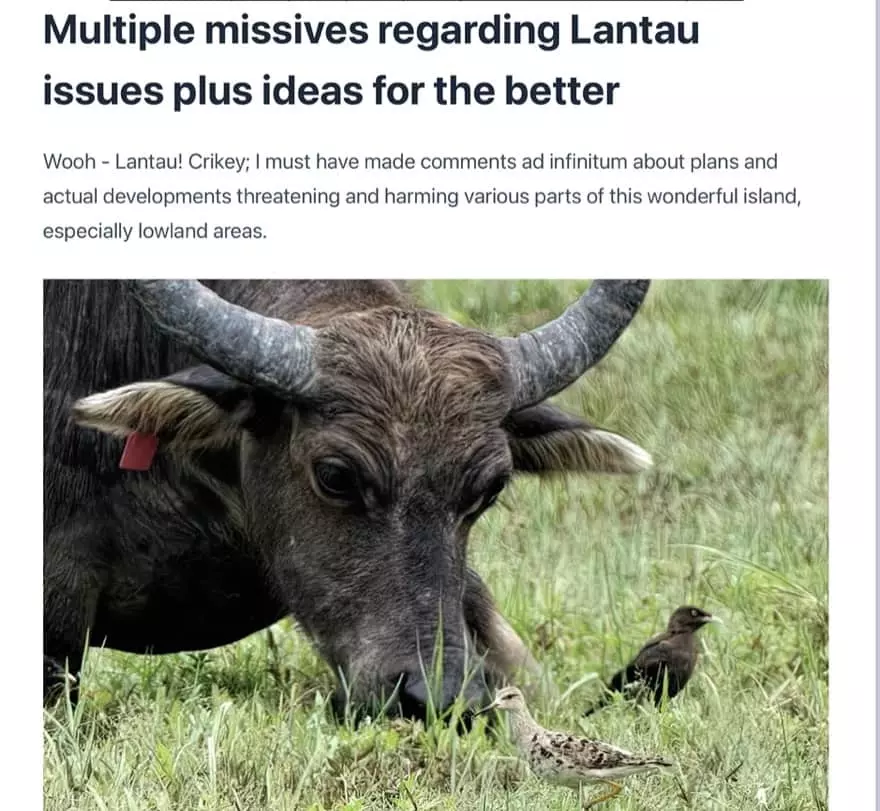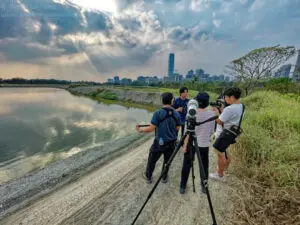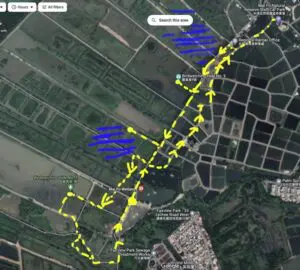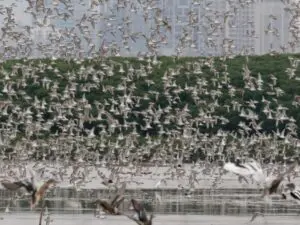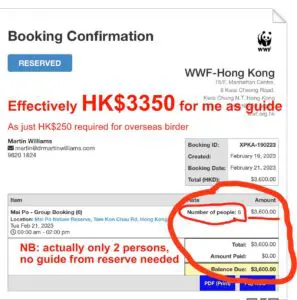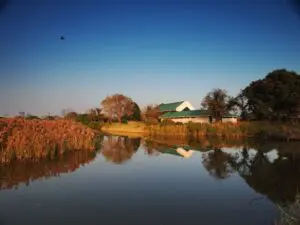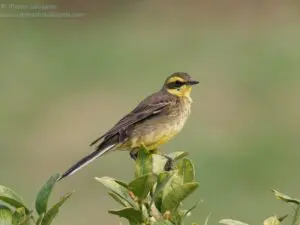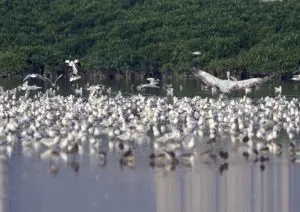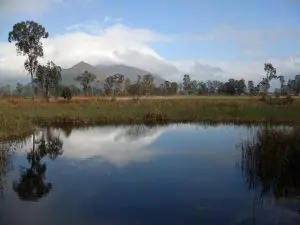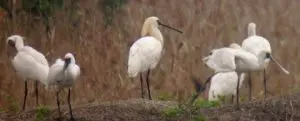Though Mai Po Marshes is at the heart of Hong Kong’s internationally important Deep Bay wetland, there are other important sites in the area – including the fishponds at Fung Lok Wai. These have been in the news at times due to wrangles over plans for housing development; but thankfully the developments have so far been kept at bay.
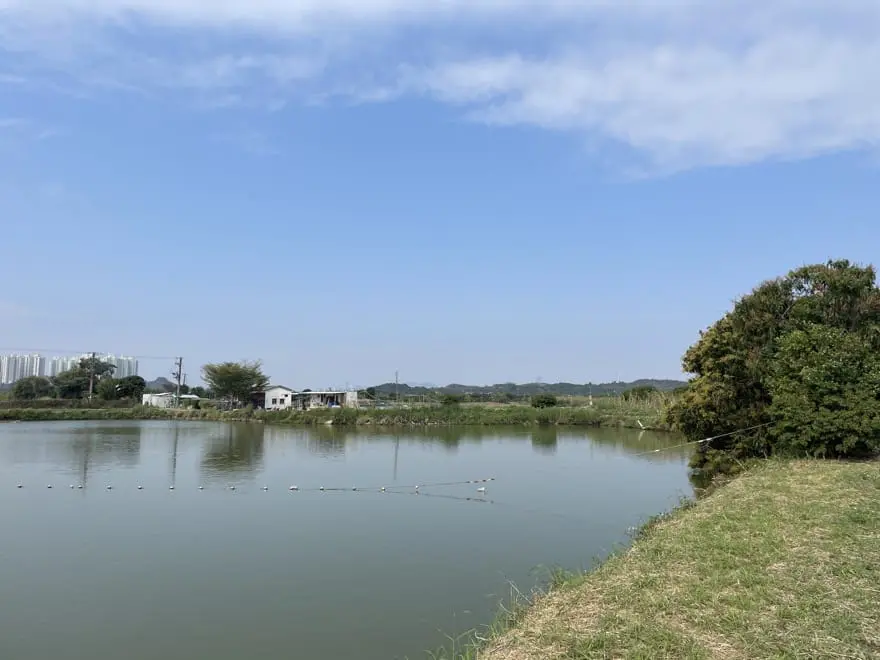
It took me quite some time to get round to visiting the area – partly as I’ve lately been avoided crowded public transport etc due to Covid, but finally made a trip out there, which was rewarding for birds, and enjoyable, with tranquillity even close to some urban sprawl. Here, then, a few notes on visiting, a little about birds, and some information on development plans vs conservation.
Getting there and walking around
Fung Lok Wai is very near the last stop of green minibus 74 from the Fook Hong Street minibus terminus in Yuen Long. The terminus is around 10 minutes’ walk from Yuen Long and Long Ping MTR rail stations; the minibus also stops outside the Long Ping station.
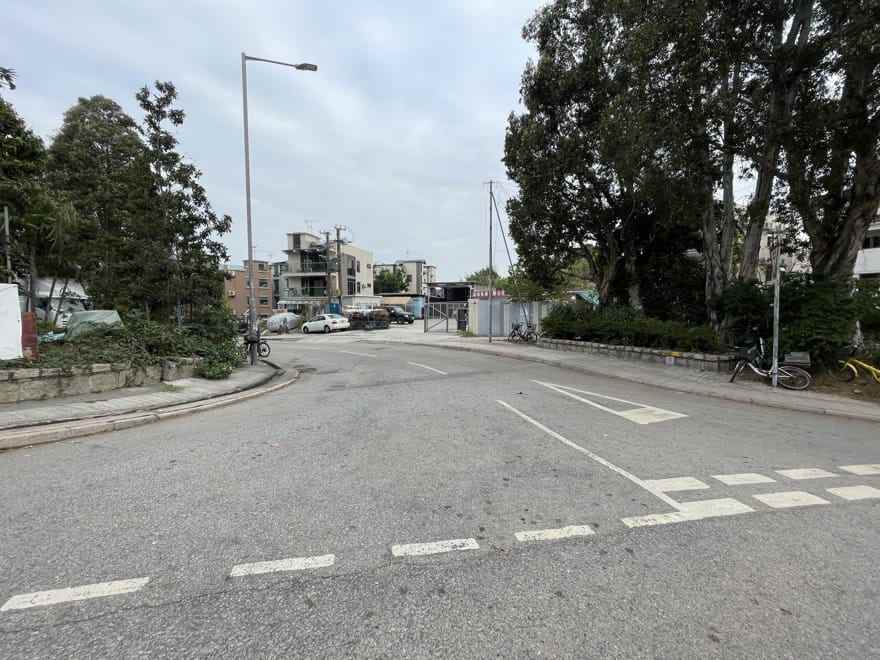
The minibus passes through a “brownfield” area typical of too much of the northwest New Territories, with various mostly small industrial type sites. And eventually stops in Shing Uk Tsuen (盛屋村). This place seems rather like the back of beyond, though there is a perhaps handy pizza restaurant by the stop. But walk north – along the street shown in photo here – and you arrive at the wetland in around 3 minutes.
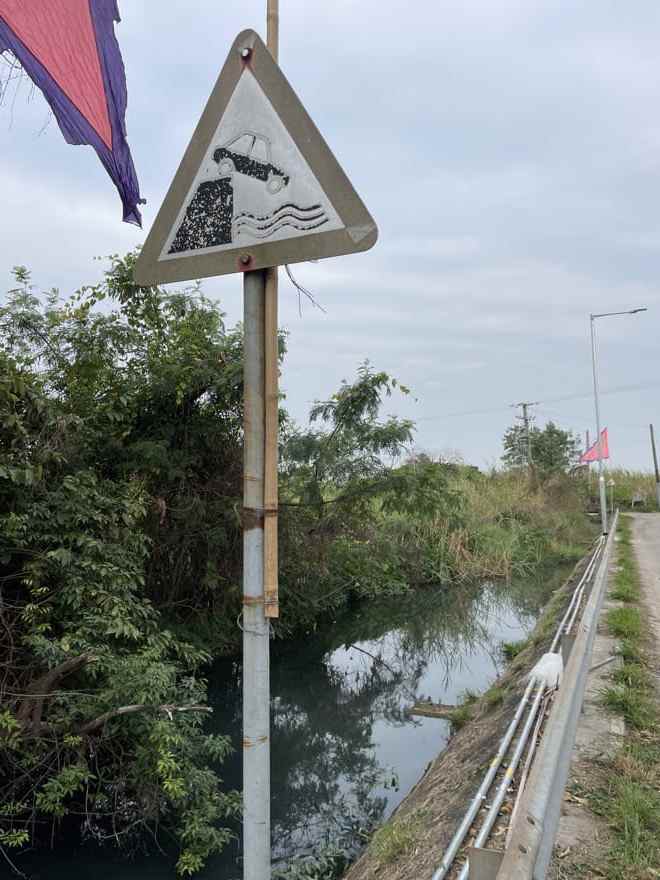
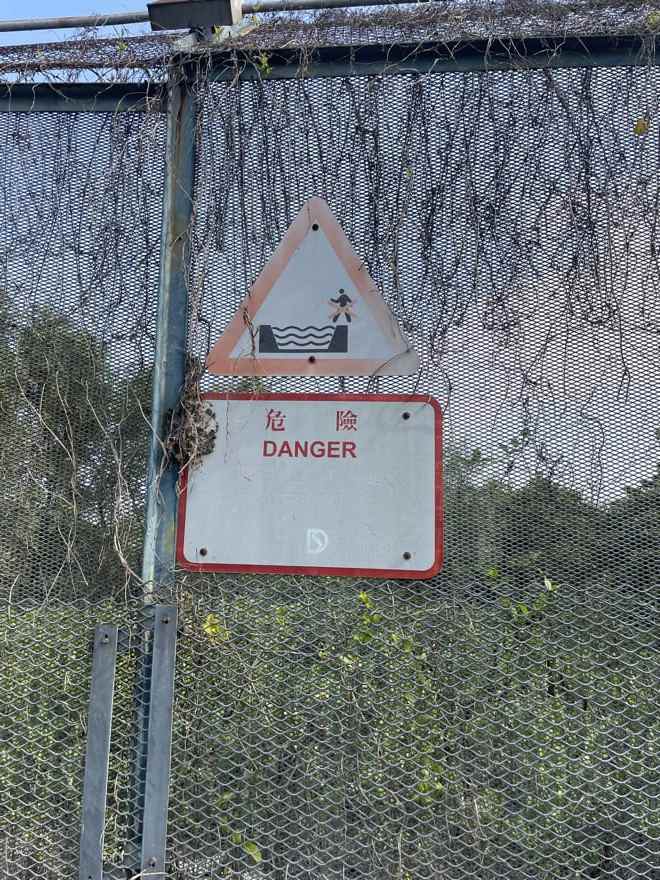
There are some cars alongside the road looking like they’ve been parked for years; maybe good if want to film a HK version of The Last of Us. A sign warns about driving into a ditch; nearby, another warns of the perils of a tidal water channel – which seems very hard to reach anyway given massive fence in the way.
This road arrives at a t-junction. I turned left here, and walked to reach a track passing the outskirts of the Wetland Park. Some birds in the area, including 15 or more Black-faced Spoonbills. But I then continued on northwards, reaching the border fence road [not actually on the border, but above the high tide line]; and in hindsight an error, as there was little to see along here. It would be better, then, to head back towards this first junction, then head in the other direction [right, as you arrive from the minibus], towards what seems to be the heart of Fung Lok Wai.
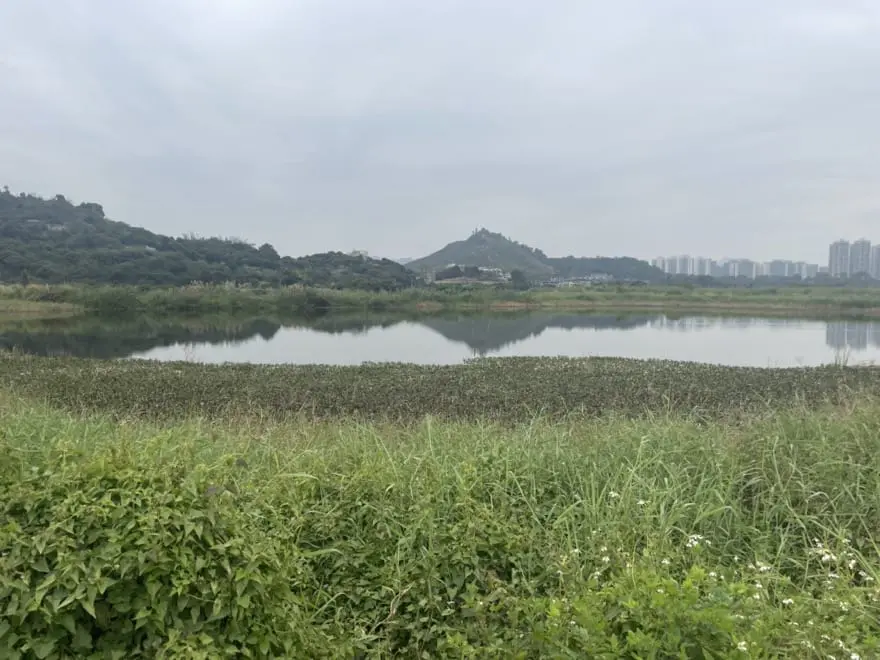
This path leads by some pretty big ponds, with a wooded hill to the south – I saw 2 Eastern Buzzards, 2 Black Kites and and 2 Crested Serpent Eagles over here and nearby, so perhaps worth scanning this area for raptors. Though look up at times wherever you are here; can hope for raptors over the entire area.
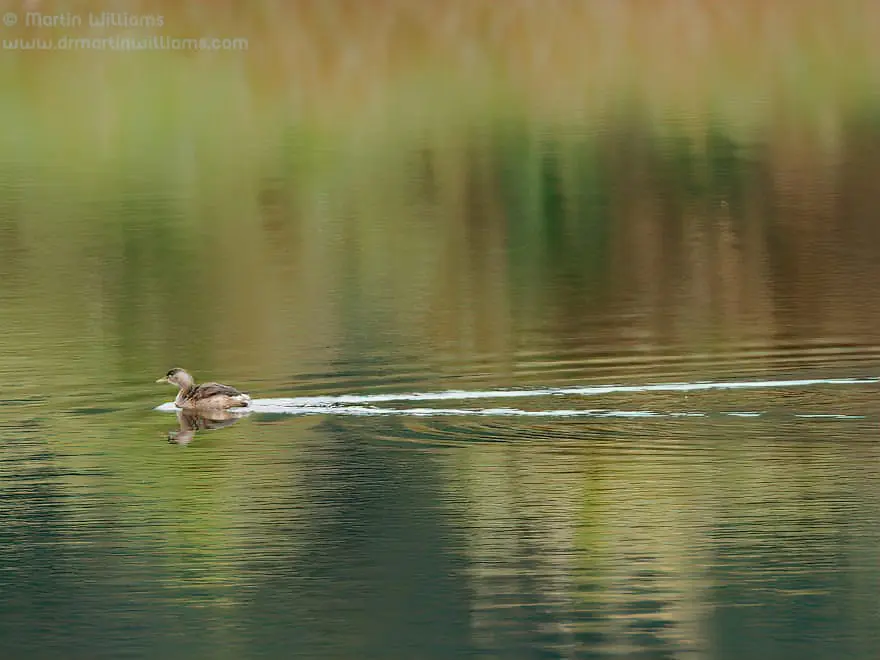
Perhaps the best area is beyond these large ponds – and you can walk along several “bunds”, embankments between ponds – watching for waterbirds, along with checking for songbirds such as Bluethroat and Amur Stonechat (on my visit; also a Hoopoe that’s less regular here I think). These include insectivores, feeding on insects that inhabit the grass and scrub along these bunds, and also help attract swifts, swallows and martins.
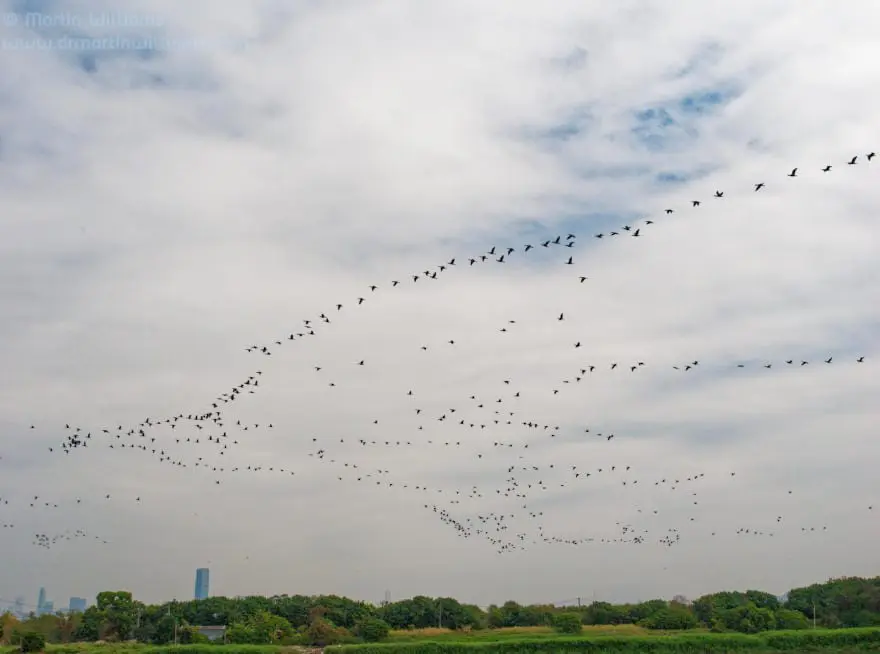
During my visit, there were a couple of times with massed flight of Great Cormorants, surely from trees where they roost at Nam Sang Wai to the southeast, and heading towards the mouth of Deep Bay to feed. Huge flocks; I estimated very roughly 800 in the first batch, and over 4000 in the second – hard to tell with any certainty when they pass almost as a single mass, a set of flocks (I took photos; bit daunted by these to even try better estimates!). A great sight; but I wonder how the flocks of all waterbirds in past may have looked. Changing baselines….
Wannabe developer Cheung Kong partners with WWF Hong Kong, which later leaves; judicial review too
Like a lot of farmland etc in Hong Kong, Fung Lok Wai has been bought up by a developer, Cheung Kong. And in December 2005, a press release was issued:
A subsidiary of Cheung Kong (Holdings) Limited (“Cheung Kong”) is pleased to announce the signing of a Memorandum of Understanding (“MOU”) with World Wide Fund for Nature Hong Kong (“WWF”) to develop a wetland nature reserve in Fung Lok Wai.
Cheung Kong Partners with WWF to Develop Wetland Nature Reserve
Ah, how splendid! – creating a wetland nature reserve of the whole area. Steady on, that was not the plan; for the press release also included: Ms Grace Woo, Executive Director of Cheung Kong, said: “The Fung Lok Wai project marries the development of a residential area with the concept of environmental protection, resulting in a win-win partnership for the community.”
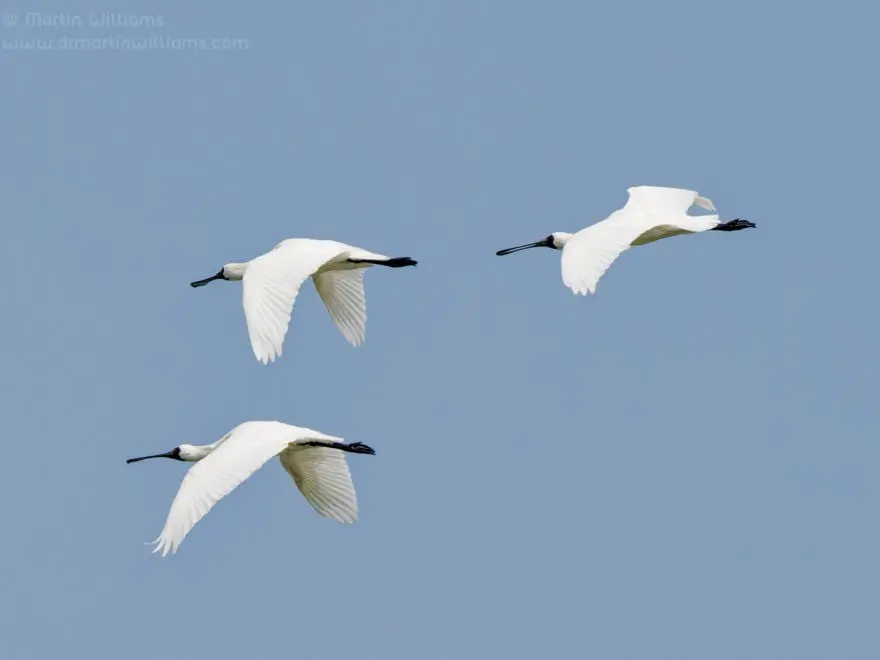
But not everyone thought this would be a win-win; certainly not feisty ngo Green Sense, which in 2011 published an article on its website including:
Green Sense is seriously concerned about the partnership between WWFHK and Cheung Kong (Holdings) Limited (Cheung Kong) for developing Fung Lok Wai in Yuen Long.
The development plan aims to provide about 2,000 flats at the ecologically sensitive Fung Lok Wai, a piece of wetland adjacent to the Hong Kong Ramsar Site.
… The Environmental Impact Assessment report of Fung Lok Wai was approved on Sept 18, 2008 after Cheung Kong proposed the project. However, the firefly Pteroptyx Maipo – a species endemic to the Hong Kong Ramsar Site, was not known at that time.
… When considering the development proposals in the Deep Bay Area, the Town Planning Board has adopted the principle of “no-net-loss of wetlands”. … In order to meet the above principle, WWFHK and Cheung Kong “cut corners” by suggesting the removal of embankments that separate the ponds, then to combine those ponds and form larger ones. … It is unimaginable that WWFHK has found the above approach feasible and credible.
… The Fung Lok Wai project involves 19 blocks of flats, ranging from 15 to 19 storeys high. These tall and bulky wall-like buildings have merged a single-line array
19 Walled buildings in Fung Lok Wai [will] extirpate firefly endemic to HK
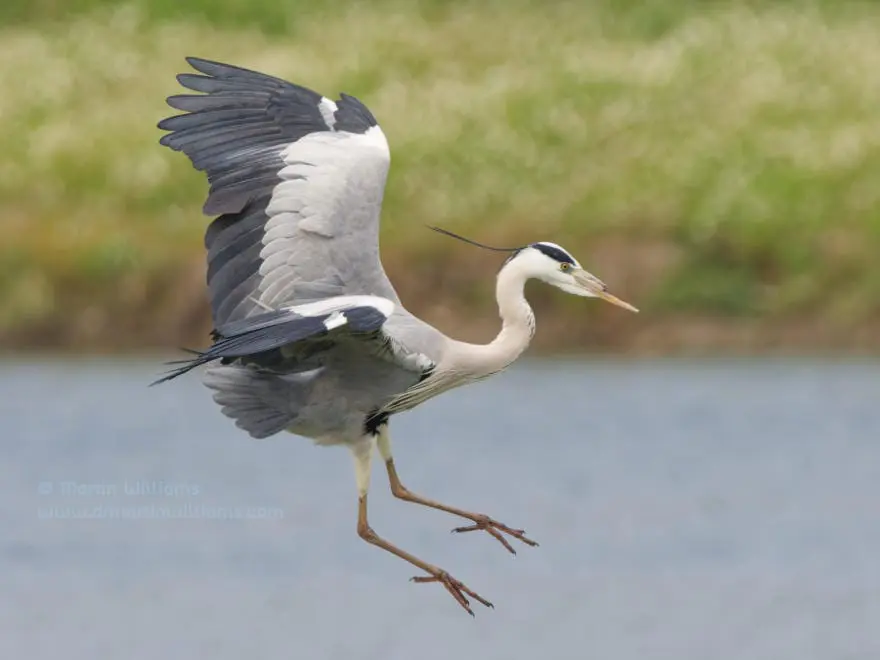
Two years later, WWF Hong Kong pulled out of the project:
After careful consideration of several unresolved issues that are critical to the Fung Lok Wai project’s success as an exemplary Public-Private Partnership (PPP) project in the Inner Deep Bay region, WWF-Hong Kong is today announcing its immediate withdrawal from the project in partnership with the project proponent, Mutual Luck Investment Limited, for a number of reasons outlined below.
… WWF is not confident that the conservation objectives set for this project are achievable if it continues to proceed in its current form.
WWF-Hong Kong Announces its Withdrawal from the Fung Lok Wai Project
In 2014, Roy Tam Hoi-pong, founder of Green Sense, sought a judicial review, to order the Town Planning Board to reconsider the application from Cheung Kong subsidiary, Mutual Luck Investment, to develop Fung Lok Wai. It took six years, but eventually Tam won his case. Court sides with environmentalist against Hong Kong developer that wants to build on globally important wetlands
Suppose you were ageing and with various ailments, yet still attractive to many; and you were in the care of someone who is doing nothing…
After I posted in a birding whatsapp group about issues with the Long Valley Nature Park, I was surprised at a response, sent to the…
If you’re among the privileged few with access to the inner sanctum of Deep Bay in northwest Hong Kong – a viewing hide at the…
If you’re unfamiliar with the Deep Bay wetland shared by Hong Kong and Shenzhen, you might wonder about the significance of the expanse of fish…
Here’s a film I made about Mai Po, using footage James Reynolds and I shot for the reserve, in English, Cantonese and Mandarin versions: Mai…
Yes, this is may seem impossible, ridiculous; but continuing with current state of affairs doesn’t look good for long term future of Deep Bay wetlands.…
Last decade, the future looked bright for the Deep Bay wetland, in northwest Hong Kong. [I wrote this for the South China Morning Post in late…
The WWF Hong Kong managed Mai Po Marshes Nature Reserve has undergone an infrastructure upgrade, with a HK$347 million grant from the Hong Kong Jockey…
With the apartment blocks of Yuen Long and Tin Shui Wai to the southwest, Fairview Park estate to the south, and the urban sprawl of…
There is a Mai Po upgrade project underway [spring 2023], funded by a HK$347.86 million grant from the Hong Kong Jockey Club Charities Trust. This seems…
A “battle of the ponds” is underway in Hong Kong’s northwest corner. It focuses on Deep Bay, a wetlands area that borders on China, near…
“If you look at satellite photos of the Pearl River delta, Deep Bay really shows up. There is nothing else like it.” David Melville Published…
Mai Po is a key component of the internationally important Deep Bay wetland, which straddles the border between northwest Hong Kong and Shenzhen.
Deep Bay in northwest Hong Kong is a wetland of international importance, a magnet for migratory waterbirds.
Mai Po Marshes has become one of the world’s greatest wetland reserves – and a place I’ve come to know well over the years. Indeed,…
Nam Sang Wai is part of the Deep Bay wetland.
At Mai Po Marshes Nature Reserve you can enjoy impressive wildlife spectacles.
Hong Kong Wetland Park is a curious place – with little wetland, excess dryland and an outsize visitor centre with exhibition areas like scifi scenes.…
Despite all the brouhaha, there is no H5N1 at Mai Po.
Mai Po Marshes Nature Reserve is a key part of the internationally important Deep Bay wetland

























